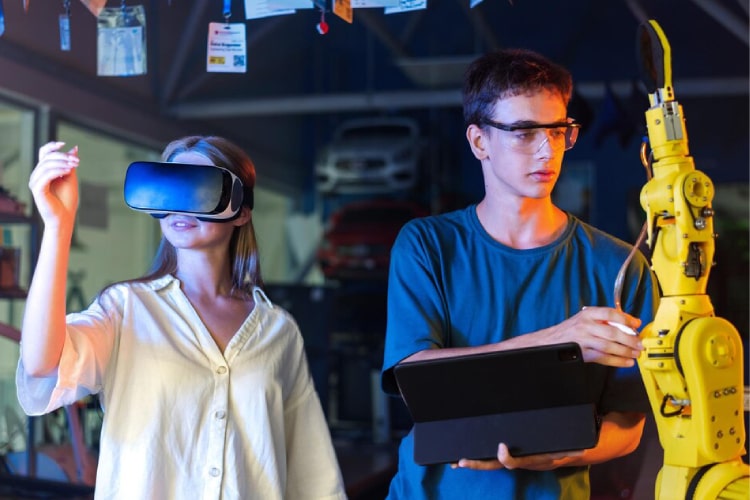Why the Next Future of EdTech is 3D Environment?

Introduction
As education transforms, 3D environments are bringing revolution in EdTech. These are the immersive scenes for students to explore, interact, and create in moving simulated spaces. Hands-on stimulation provides much better understanding and engagement, unlike the traditional teaching methods. From virtual laboratories to the creation or recreation of historical places, the limit does not stop there. This blog will reveal the reason why 3D environments are the future building blocks of education today.
3D Environments: what are they about in Education?
3D environments are magical illusionary spaces built to emulate reality or recreate fantasized settings so that for students, the entire learning experience could be as interactive and fun as possible. Such platforms allow students to move around or play with objects in a virtual world while completing simulations about a certain process or the entire life of an organism. When studying biology, for example, students might look around a model of a cell in three dimensions. A historian, on the other hand, may take a tour of a reconstructed medieval town. Unlike other static images, such environments contribute to an active learning process which in turn ignites curiosity and increases informal understanding and retention in students. Of course, advances in technology make 3Ds available and cheaper to schools.
Examples of 3D Learning Tool
virtual science laboratories, architectural design and reconstruction, and history.
Core Characteristics
These environments are representative of visual realism, interactivity, and largeness in applicability for various subjects.
How 3D Environments Enhance Learning Experiences
They adapt in making 3D environments which can illuminate and augment abstract theories. Usually, students learn abstract theories quite badly because those theories lack the practical component. With 3D tools, many students can visualize and manifest very complex ideas; physics students can now gravity impact test a virtually simulated scenario, or art students can make 3D model sculptures. This kind of participatory fun improves comprehension and retention from the learning approach.
Active Participation at its Best
So, students won’t observe 3D tools, but will become active participants as well, thus making the participation deeper.
It helps improve students’ understanding of difficult concepts by being able to visualize the process or object to help facilitate the complex understanding of concepts.
3D Virtual Environments Facilitate Collaborative Learning
3D environments do excellent work with student collaboration. A virtual classroom or a common space allows students to work together on all kinds of projects, albeit miles apart. Imagine a group of students designing a city using a 3D modeling platform or doing science experiments in an entirely virtual lab together. Such activities would train and develop teamwork while encouraging students to think through problem solutions independently. Without a doubt, these skills will be indispensable for future careers in the business of a globalized world.
Team Projects in Virtual Spaces
Students can work on joint projects, such as designing ecosystems or performing experiments together.
Real-Time Feedback and Interaction
3D platforms allow teachers and peers to provide instant feedback, especially improving the overall learning of students.
Future Implications of 3D Environments in EdTech
The consumption of 3D environment research in education is still infancy stages, but the potential that it holds is vast. As advancement in the world of technology continues, the intricate architecture will be sophisticated, become more accessible, and spread quickly among many countries. All educational institutions-from schools to college-will embrace 3D tools for diverse activities, such as carrying out training to developing careers and for cultural immersion. Aspiring engineers, for example, can use a 3D modeling tool to design the prototypes while language learners can indulge themselves in virtual cultural environments. AI integrates further learning into 3D environments tailored to the individual student’s needs.
Scalability and Access
To this extent, a reduced cost-plus better infrastructure will accommodate 3D platforms in classrooms worldwide.
Integration with Emerging Technologies
AI joined at the hip with VR and 3D tools will create an immersive and personalized learning environment.
Conclusion
Evidence taken from the 3D environment shows that it will be changing education in terms of how interactive, collaborative, and effective everyone becomes as EdTech becomes developed. These tools will also help in providing students with the real-world application of officials and tools that are likely to prepare them fully for the challenges of tomorrow. In a heightened manner as EdTech grows, so is the high need for 3D environments in classrooms today.
